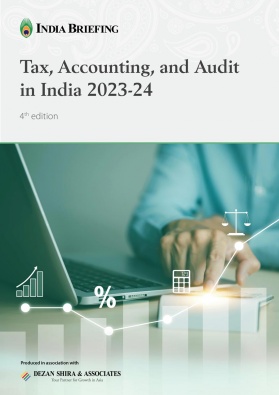Equalization Levy Compliance Framework for Non-Resident E-Commerce Operators in India
In keeping with the OECD’s BEPS provisions, India has in place an equalization levy since 2016, which was amended in the Finance Act 2020. We discuss how this digital tax mechanism impacts non-resident e-commerce operators in India.
The rapid evolution of information technology has ushered in a transformative era for businesses, with the advent of 4G and 5G technologies providing crucial support for the digital transition. This shift has enabled businesses to operate seamlessly through digital platforms, transcending geographical boundaries. Consequently, the conventional principles of taxation based on residency or permanent establishment find themselves inadequate in this dynamic landscape.
Responding to this global call, the Organization for Economic Co-operation and Development (OECD) introduced a remedy through its Base Erosion and Profit Shifting (BEPS) project. This entailed recommending a withholding tax on payments pertaining to digital goods and services furnished by foreign e-commerce operators.
In response, India introduced the equalization levy, a digital tax mechanism, in 2016. Initially, it applied to online advertisements and related payments for utilizing digital ad space, set at a six percent rate for non-residents without a permanent establishment in India. However, as of April 1, 2020, the Indian government has extended the scope of the equalization levy. The Finance Act, 2020, introduced a new provision – Section 165A – which mandates that non-resident e-commerce operators providing e-commerce supplies or services to Indian residents must remit an equalization levy. This levy, set at a rate of two percent, is calculated based on the consideration received or expected from e-commerce supplies or services facilitated, provided, or delivered by the said operator.
Now, the equalization levy encompasses e-commerce transactions involving the sale of goods and services by non-resident operators to Indian customers. This levy stands at two percent and is imposed on the consideration received or expected by these non-resident e-commerce operators. This change showcases the government’s endeavor to adapt taxation norms to the evolving landscape of digital business operations.
In essence, the equalization levy represents a taxation mechanism applicable to:
(a) Designated services, as established by the Finance Act of 2016; and
(b) E-commerce supplies or services, as delineated under the Finance Act of 2020.
Overview of the equalization levy in India
Applicability
The equalization levy is relevant to the consideration received or anticipated by an e-commerce operator stemming from the provision, facilitation, or delivery of e-commerce supplies or services to various categories:
- Indian residents
- Non-residents under specific circumstances, which include:
-
- Sale of advertising aimed at Indian customers, where these customers either reside in India or access the advertisement using an IP address situated in India
- Sale of data collected from Indian customers
- Individuals who purchase goods or services, or both, using an IP address located within India
An e-commerce operator pertains to a non-resident entity responsible for the ownership, operation, or management of a digital or electronic platform or facility facilitating online sales of goods and services.
The term ‘e-commerce supply or services’ encompasses the following activities:
- Online retailing of goods owned by the e-commerce operator; or
- Online delivery of services by the e-commerce operator; or
- Assisting in the online retailing of goods or provision of services, or both, by the e-commerce operator; or
- Any combination of the aforementioned activities.
Exceptions and exemptions
The equalization levy does not come into play under the following circumstances:
- The e-commerce operator maintains a Permanent Establishment (PE) in India, and the e-commerce supply or services is directly linked to this PE.
- The consideration received has already undergone the six percent equalization levy due to engagement in online advertising and related functions.
- The e-commerce operator’s sales, turnover, or gross receipts from the e-commerce supply or services, whether made, provided, or facilitated, remain below INR 20 million for the fiscal year.
Income tax relief
Starting April 1, 2021, amendments to the income tax regulations introduce an exemption for income generated by an e-commerce operator already subject to the equalization levy.
Payment framework and considerations
It’s essential to note that the levy operates as a disbursement by the e-commerce operator, rather than being implemented as a withholding tax by the payer. This distinction underscores the importance for non-resident suppliers of goods and services outside India to grasp the implications of this fresh provision initiated by the federal government.
The equalization levy necessitates e-commerce operators to transfer the stipulated amounts to the Indian central government’s account on a quarterly basis. The due dates for these deposits are outlined as follows:
|
Quarter |
Due Date |
|
June 30 |
July 7 |
|
September 30 |
October 7 |
|
December 31 |
January 7 |
|
March 31 |
March 31 |
Compliance obligations for the equalization levy on non-resident e-commerce operators
To fulfill the compliance requirements for the equalization levy, certain crucial deadlines and actions need to be adhered to by non-resident e-commerce operators. Specifically:
- Annual statement filing deadline: An essential task entails filing an annual statement within the timeframe of April 1 to March 31, with the submission deadline set on June 30 of the corresponding financial year. This procedure is imperative for maintaining compliance.
- Late payment implications: Timely payment of the equalization levy is paramount. Failure to meet the stipulated payment deadline invites the imposition of simple interest at a monthly rate of 1% on any overdue amounts. Additionally, a non-resident e-commerce operator that neglects to pay the levy faces a penalty equal to the levy’s amount, amplifying the importance of adhering to the payment timeline.
- Penalties for non-filed annual statements: Non-compliance with the requirement to file the annual statement carries its own set of consequences. An additional penalty of INR 100 per day is enforced for each day of non-compliance, calculated for the period during which the default persists.
- Role of Permanent Account Number (PAN): In the process of fulfilling the aforementioned obligations, non-resident e-commerce operators would necessitate a Permanent Account Number (PAN). This requirement is crucial for further progress, despite not being a prior necessity when their earnings were not subject to taxation within India.
Incorporating the above compliance measures is vital for non-resident e-commerce operators to ensure adherence to India’s tax regulations, fostering a climate of fair taxation and regulatory accountability.
GST and equalization levy conundrum for non-resident e-commerce operators
There is an intricate relationship between GST and the equalization levy in the context of certain cross-border electronic supplies by nonresident e-commerce operators.
Under the GST law, a specific category known as Online Information Database Access and Retrieval (OIDAR) services is included. These services, facilitated through information technology over the internet or electronic networks, are characterized by automated supply with minimal human intervention. OIDAR services cover a range of offerings such as internet advertising, cloud services, e-books, movies, music, software, digital data storage, and online gaming.
In cases where a nonresident service provider offers OIDAR services to an unregistered GST customer in India (i.e., business-to-consumer or B2C supplies), the provider is obligated to register for GST in India. This registration entails the collection and remittance of GST on these services within India.
This intersection between GST and the equalization levy can potentially lead to a situation of double taxation. Importantly, since they are both distinct and autonomous taxes, they cannot be offset against one another.
About Us
India Briefing is produced by Dezan Shira & Associates. The firm assists foreign investors throughout Asia from offices across the world, including in Delhi and Mumbai. Readers may write to india@dezshira.com for more support on doing business in India.
We also maintain offices or have alliance partners assisting foreign investors in Indonesia, Singapore, Vietnam, Philippines, Malaysia, Thailand, Italy, Germany, and the United States, in addition to practices in Bangladesh and Russia.
- Previous Article India’s New E-commerce Tax Regulations for Composition Taxpayers and Unregistered Individuals
- Next Article Navigating Business Prospects in India’s Retail Industry








